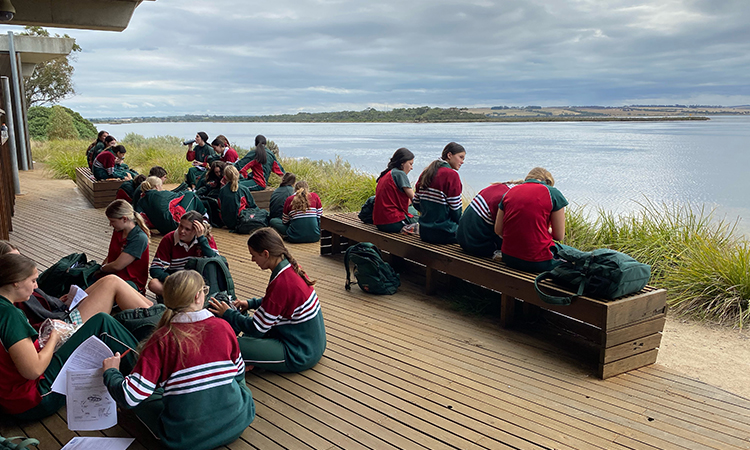Three Year 11 biology classes recently went on an excursion to the Marine biology centre in Queenscliff. In class, we had been learning about the different types of asexual production and got to apply this knowledge on our journey around the different rooms. – Lauren Dillon
Throughout the excursion, we had the opportunity to rotate through a variety of activities offered at the marine centre, one being the touch tank room where we were able to softly and respectfully touch different marine animals such as crabs and sea urchins. The touch tank room allowed us to learn about species of animals that thrive in a rock pool environment in a way that was interactive and engaging! – Montana Morgan
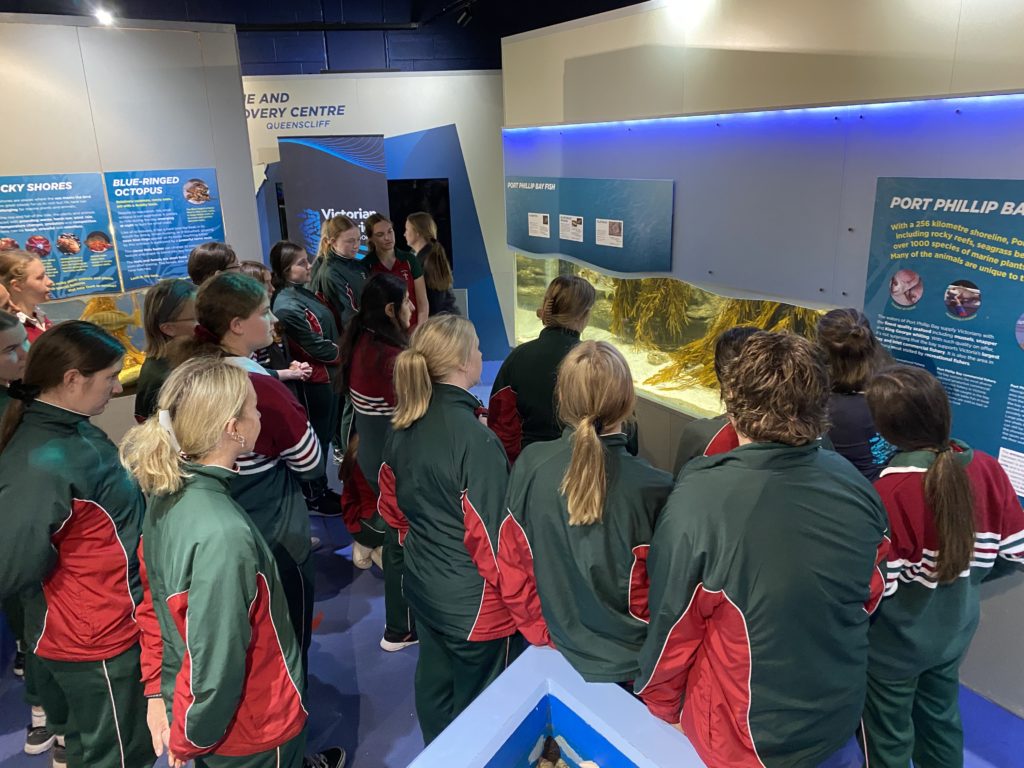
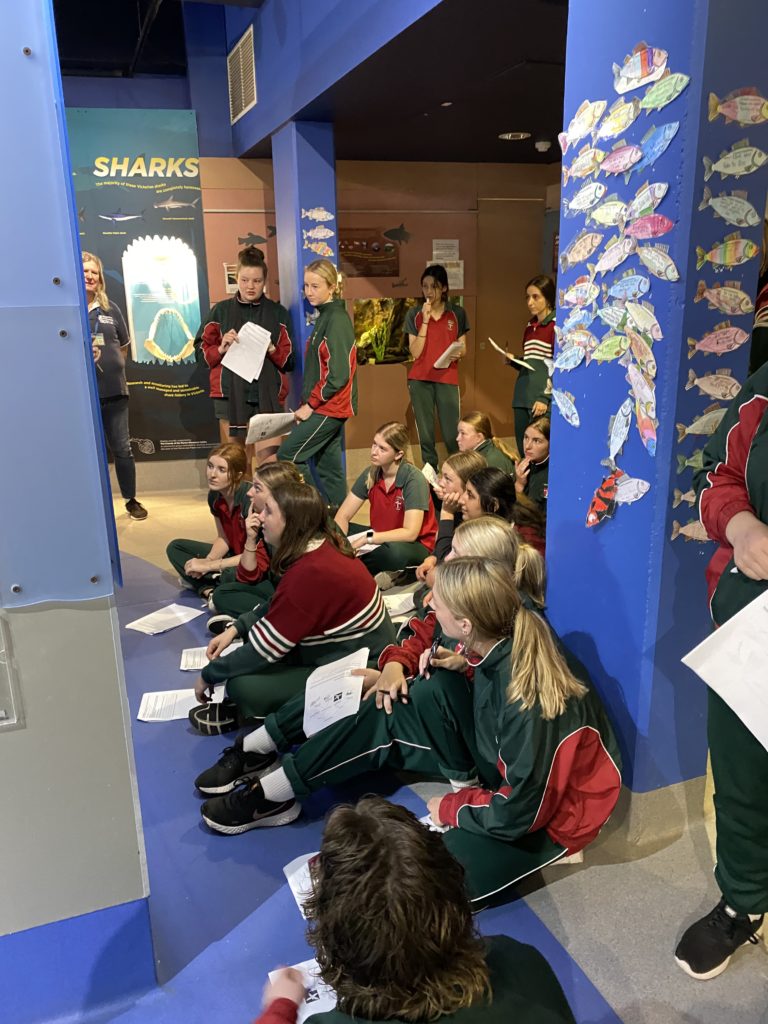
We were lucky enough to have a station that focused mostly on different marine organisms, adaptations. (An adaptation is a particular structure or behavior that assists an organism in survival.) In the beginning, we were given a really cool example by a puffer fish! We looked and spoke about their adaptions, an example being, when a puffer fish is faced with a dangerous situation, they will suck air or water into its stomach, and grow to three times its original size. This is an adaptation that is meant to intimidate possible predators. From there we were given a worksheet and were allowed to move around the room and jot down what we found and our thoughts. There were many amazing models, ranging from turtles, octopus, string rays and more. We jotted down the name of an organism, an adaptation they have and a way it helps them to survive. We were able to work together and get help from those around us. It was a great activity and really helped grow our knowledge on the topic area of adaptations! – Kasey Randall
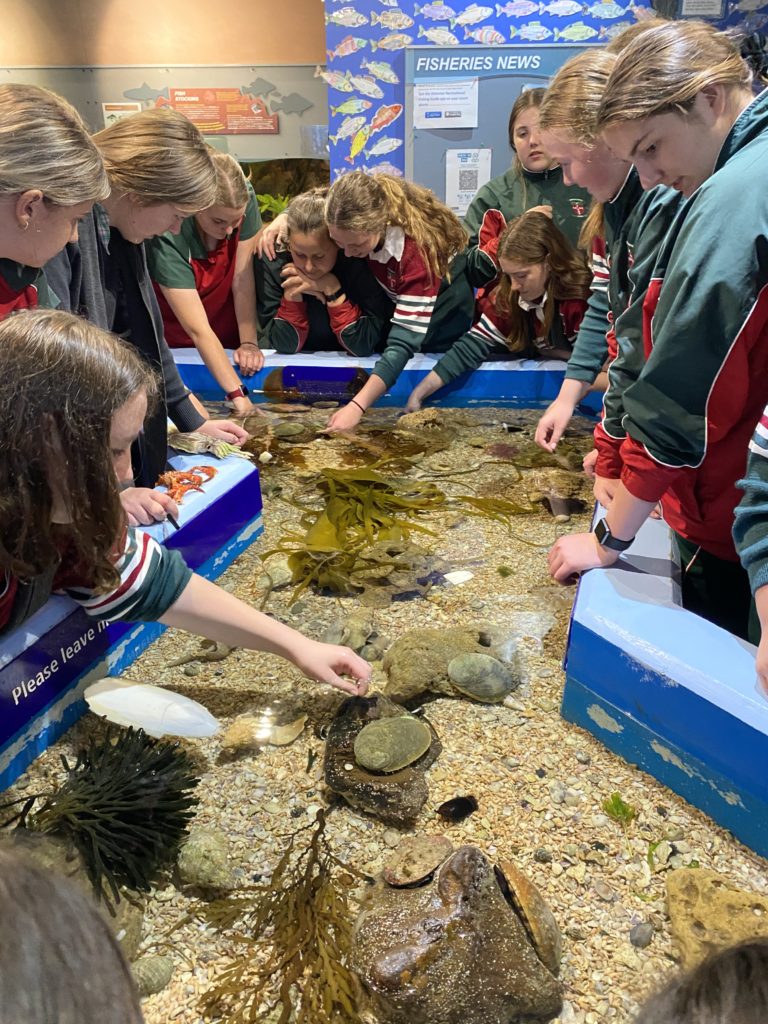
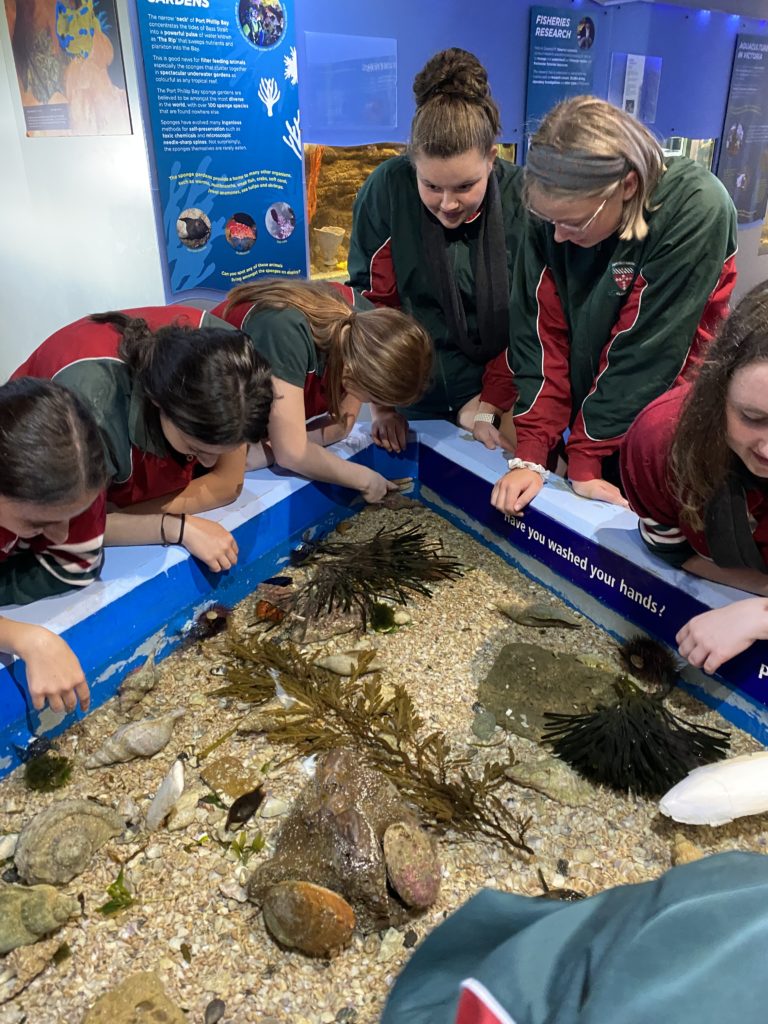
One activity we participated in was looking at the ways different marine animals reproduce. We were given the opportunity to look at a tube worm releasing their gametes (sperm and eggs) under the microscope. We learnt about the different ways that a marine animal can reproduce, such as asexually and sexually, and what ways in which they go about this. We looked at specific examples of asexual and sexual reproduction in animals, a tube worm being an example of external sexual reproduction, a whale being an example of internal sexual reproduction and sea anemones being an example of asexual reproduction called budding. This was a fun way to see and learn about the advantages and disadvantages of these different types of reproduction. – Mia Hunter

